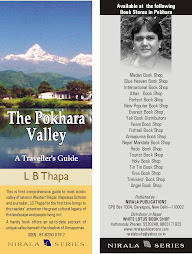LB THAPA
Some 50 years ago, a wretched family of four left Tibet at midnight. It was of course a hard decision to leave one’s own land behind, but they took that bold decision anyway.
The journey was difficult for Sonam Wangmo, as she was heavily pregnant. She walked with her family for four days, and then one afternoon when the sun was beating hard, she had labor pains and gave birth to a girl child. Her husband held the baby in his arms and continued the journey. Eventually they reached Lomanthang (Mustang) in Nepal.
girl child. Her husband held the baby in his arms and continued the journey. Eventually they reached Lomanthang (Mustang) in Nepal.
This sounds more like a scene from a popular commercial cinema. But this is not! Sonam Wangmo presently lives in the Tashi Palkhel Refugee Camp of Hemja in Pokhara. The baby who was born on the trek is Tsete Dolma who is now 50 years old. She lives in the Tashiling Refugee Camp of Chhorepatan in Pokhara.
*****
Journalist Shree Bhakta Khanal has made an investigation into such Tibetan refugee issues. And he has come up with a documentary, “An Incomplete Story”. Khanal himself wrote the script and directed the documentary, which has ably highlighted Tibetans’ culture in general and their political problems in particular.
It narrates the story right from His Holiness the Dalai Lama’s self-exile from Tibet to India; and all the troubles followed after then. In one part of the documentary, it has shown how some Khampas waged a guerrilla war against the mighty Chinese for a quite sometime. This was no doubt a daring effort.
Tashi is one of the guerrilla fighters. The fact that he was trained in Colorado by the US to fight against the Chinese interests has added a new dimension to investigative journalism.
Yet another guerrilla fighter, Lobsang, says: “We’re Buddhists. We believe in non-violence. But the way the Chinese authority compelled our holy master the Dalai Lama is an unpardonable act. Hence we took up arms against the Chinese authority.”
*****
Namgyal & Doma are husband and wife, who are childless. They give a touching reason for this.
“We’ve been living in Nepal for a long time. But we still don’t have valid refugee Identity [ID] cards. In this condition, the government can take any legal action against us. When our future is bleak, how can we think of having children?” asks Doma, with tears rolling down her cheeks.
*****
Some 50 years ago, a wretched family of four left Tibet at midnight. It was of course a hard decision to leave one’s own land behind, but they took that bold decision anyway.
The journey was difficult for Sonam Wangmo, as she was heavily pregnant. She walked with her family for four days, and then one afternoon when the sun was beating hard, she had labor pains and gave birth to a
 girl child. Her husband held the baby in his arms and continued the journey. Eventually they reached Lomanthang (Mustang) in Nepal.
girl child. Her husband held the baby in his arms and continued the journey. Eventually they reached Lomanthang (Mustang) in Nepal.This sounds more like a scene from a popular commercial cinema. But this is not! Sonam Wangmo presently lives in the Tashi Palkhel Refugee Camp of Hemja in Pokhara. The baby who was born on the trek is Tsete Dolma who is now 50 years old. She lives in the Tashiling Refugee Camp of Chhorepatan in Pokhara.
*****
Journalist Shree Bhakta Khanal has made an investigation into such Tibetan refugee issues. And he has come up with a documentary, “An Incomplete Story”. Khanal himself wrote the script and directed the documentary, which has ably highlighted Tibetans’ culture in general and their political problems in particular.
It narrates the story right from His Holiness the Dalai Lama’s self-exile from Tibet to India; and all the troubles followed after then. In one part of the documentary, it has shown how some Khampas waged a guerrilla war against the mighty Chinese for a quite sometime. This was no doubt a daring effort.
Tashi is one of the guerrilla fighters. The fact that he was trained in Colorado by the US to fight against the Chinese interests has added a new dimension to investigative journalism.
Yet another guerrilla fighter, Lobsang, says: “We’re Buddhists. We believe in non-violence. But the way the Chinese authority compelled our holy master the Dalai Lama is an unpardonable act. Hence we took up arms against the Chinese authority.”
*****
Namgyal & Doma are husband and wife, who are childless. They give a touching reason for this.
“We’ve been living in Nepal for a long time. But we still don’t have valid refugee Identity [ID] cards. In this condition, the government can take any legal action against us. When our future is bleak, how can we think of having children?” asks Doma, with tears rolling down her cheeks.
*****
In a nutshell, the documentary successfully presents the Tibetan refugees’ actual lives in Nepal, which are filled with uncertainties. The documentary also focuses on the Nepali government’s predicaments regarding the Tibetan refugee issues.
The issue of Bhutanese refugees of Nepali origins vis-à-vis Tibetan refugees is another matter to deal with, and not treated on par because of, among other things, prejudicial tones. For instance, there are young Tibetan boys and girls, though born in Nepal, who still don’t have valid refugee identification papers with them. This has been an irksome issue.
*****
Without doubt, director Khanal has made a truthful effort to show the ideological clashes between the Dalai Lama who believes in an autonomous Tibet, and the new generation of Tibetans not ready to accept anything less than completely “Free Tibet”.
There is an interview with the foreign secretary and the health minister of the exiled government of HH Dalai Lama. These diplomats believe in autonomous Tibet whereas the president of the Tibetan Youth Congress (TYC) strongly voices for Free Tibet. This shows, for one thing, that exiled Tibetans’ views are largely divided among themselves.
*****
Director Khanal’s labor in the making of this documentary is praiseworthy. He says that the name of the documentary is “An Incomplete Story” because the story will be complete only when the Tibetan people are welcomed back in Tibet with their presently lost honor and dignity restored.
The issue of Bhutanese refugees of Nepali origins vis-à-vis Tibetan refugees is another matter to deal with, and not treated on par because of, among other things, prejudicial tones. For instance, there are young Tibetan boys and girls, though born in Nepal, who still don’t have valid refugee identification papers with them. This has been an irksome issue.
*****
Without doubt, director Khanal has made a truthful effort to show the ideological clashes between the Dalai Lama who believes in an autonomous Tibet, and the new generation of Tibetans not ready to accept anything less than completely “Free Tibet”.
There is an interview with the foreign secretary and the health minister of the exiled government of HH Dalai Lama. These diplomats believe in autonomous Tibet whereas the president of the Tibetan Youth Congress (TYC) strongly voices for Free Tibet. This shows, for one thing, that exiled Tibetans’ views are largely divided among themselves.
*****
Director Khanal’s labor in the making of this documentary is praiseworthy. He says that the name of the documentary is “An Incomplete Story” because the story will be complete only when the Tibetan people are welcomed back in Tibet with their presently lost honor and dignity restored.
(Credit: This article was originally published in The Republica)









No comments:
Post a Comment